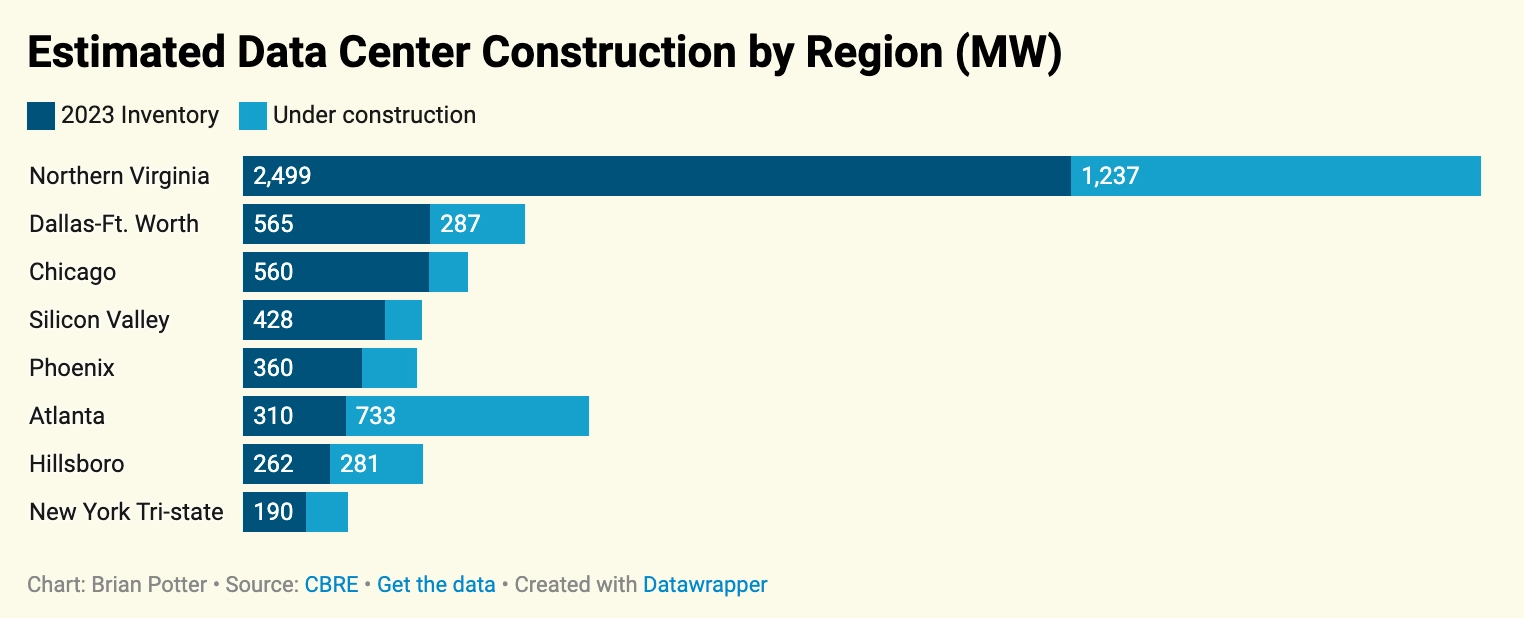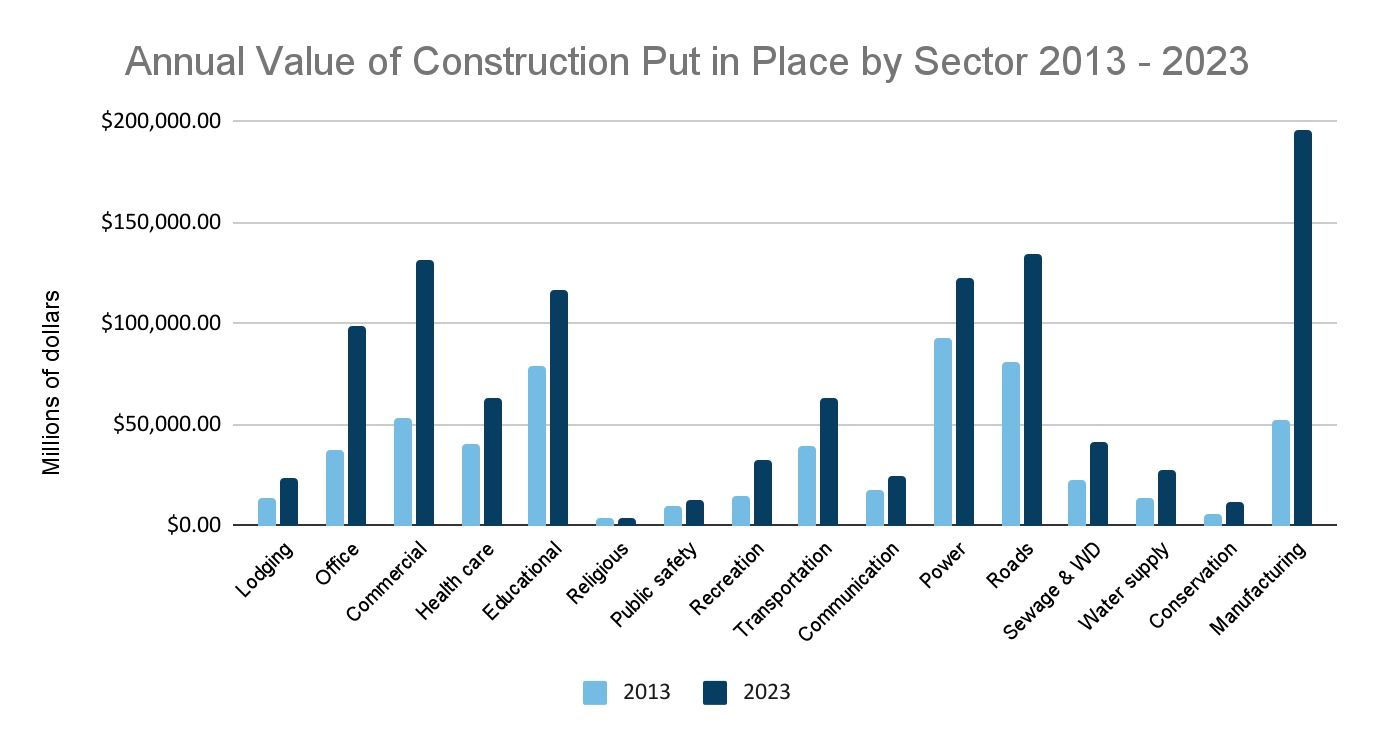Our mission here at Building Ventures is to help create a better built world. But what does a better built world look like? What are the essential elements or defining processes? Most importantly, what must we do now to create this better future? In this series, we explore how we must change the way we design, build, operate and experience the built environment to realize an improved future for us all.
I’m passionate about how technology impacts working in the field because of my experience working in both construction and construction technology startups. Twelve years ago, I worked in project controls while building a mine. My typical day started when I woke up at 4:30 am to be in the field by 6:30 am, at which point I would join the safety talk. Then, I would spend the work day between the office and the field coordinating with the different stakeholders. Around 5:00 pm, the project team convened to review the lookahead one more time before going home at 6:30 pm. Although I felt a lot of pride in what I was doing, I also felt many times I was running behind on the tasks that needed to be done. In an industry where the margins are tight and project delays can impact asset utilization, making sure everything progresses smoothly is very important.
Fast forward to 2015, I moved to San Francisco to pursue an MBA to further my career in the construction industry. While immersing myself in school and the global epicenter of tech, I was surprised to discover many different technologies that were leveraged in other industries that were non-existent in construction projects. I constantly found myself considering the applicability, realizing that if I had used this on the project, we would have done xyz faster—whether it was materials procurement, scheduling, estimating, or something else entirely. With this motivation, I made my way into one of the many construction startups that were being born at that time. Little did I know that just like me, there were many construction professionals that were starting to look into technology as a tool to improve the tasks they were performing on a day to day basis. This was a time where a lot of technologies started appearing and disrupting the status quo of the builders.
What struck me then was the disconnect between the technology being developed by startups and the reality of working in the field. Even if solutions were available, they weren’t always accessible or easy to use for the people on a job site. When I think about a better built world in the future, I see our industry overcoming this disconnect by leveraging technology, including AI. If we embrace technology the right way, it has the potential not only to create better projects and outcomes, but also to ensure a better experience for people building. We need to make sure solutions are easy to implement in the field and have a tangible ROI, whether that’s in the form of money for the company’s bottom line or time for the boots-on-the-ground. Moreover, as new generations join the workforce, it’s imperative that tools used in the built world are aligned with the digital world not only to ensure projects are completed safely, on time, and on budget, but also to attract the talent our industry needs to thrive.
Digitization of construction as a stepping stone for AI
Fifteen years ago, we were in the early days of digitization of construction. At the time, most digital solutions were running on premise and the biggest advancement had come in the form of BIM software. Then, professionals frustrated with the status quo and the lack of better solutions started to ideate a better way to do things, and a new set of solutions leveraging the cloud started to appear in the market. The focus of a lot of this wave of solutions was in digitization and collaboration. These tools disrupted the spreadsheet-based workflows and finalized the construction industry’s transition into the digital world. This wave saw players like Plangrid, Assemble, FieldLens, BuildingConnected, Pype, and many more. This was a very important step in transforming the construction industry. We have to remember that up until then, most processes in construction projects were siloed. Information lived in spreadsheets, and each project had its own server. This, of course, impacted how information flowed and how processes were run. In order to provide a clear picture of the project, data needed to be consolidated, validated, and verified before sharing with stakeholders. That’s a lot of hands-on processing—and often duplicative manual data entry—at every step of the way. It’s no surprise that the first wave of cloud-based technologies replacing these manual, costly workflows were widely adopted across the industry.
The rapid growth and adoption of these new types of solutions signaled to investors and entrepreneurs that the construction industry is one hungry for innovation. As a result, hundreds of new startups appeared in the construction space. And many major GC firms created teams to evaluate which solutions were best suited to their projects, what were the security protocols, how to run pilots, and, most importantly, how to leverage technology to address the challenges of today and the future. In 2020, the industry experienced an inflection point with the onset of the COVID-19 pandemic and professionals in the construction industry had to quickly figure out how to keep building while keeping everyone safe. Once again, the professionals in the construction industry were put under pressure and found new ways to leverage technology in order to keep building. During this period we saw another acceleration in adoption of technology in the industry.
Today, we find ourselves at another inflection point defined by this rapid growth of a new technology: generative AI. Training AI models for the construction industry wouldn’t be possible without the terabytes of data that has been stored in the last 15 years, a direct result of the industry’s initial digitization and the subsequent wave of cloud-based technology. Now, we have the opportunity to leverage the digital data that has been amassed during all these years in order to create a new set of AI-powered solutions—ones that will help us realize a better built world.
AI’s outsized impact on the construction industry
Since the release of Chat GPT in November 2022, it’s hard to go a day without reading news on AI and how this new technology is being widely adopted in many industries. According to Pitchbook, there has been a collective investment of $83.5 billion in vertical applications leveraging AI. The construction industry is no stranger to this trend. Most major GCs are already allocating resources to understand how they can take advantage of these new technologies coming to the market. At Building Ventures, we have seen many platforms leveraging this type of tech. Based on our own deal tracking, there has been around $150 million invested in contech startups leveraging AI so far this year.
But for the construction industry, new AI-powered solutions are only part of the impact. Powering AI requires substantial amounts of computational power and energy. The growing use of commercial AI models will cause data centers to increase their energy consumption by 160% by 2030. In order to meet these urgent demands for computing power, hyperscalers are simultaneously undertaking major data center projects .

As Jesse mentioned in his article on constructing a better built world, we are in the midst of an instructive moment that will set the tone and standard for the future. The construction workforce is not only tasked with undertaking major construction projects in the fields of energy, manufacturing, and data centers, but also doing so while bringing the industry to net carbon zero. In addition to owners like Alphabet, Microsoft, Amazon, and Meta having ambitious carbon reduction goals, there is government regulation compelling other companies to invest in sustainability. CA Senate Bill 253 and New York State’s clean concrete guidelines are just two recent examples.
This is an exciting moment for the builders of the world, as they are at the intersection of AI’s impact: constructing new, net-zero facilities that will power these new technologies for everyone, while at the same time adopting, testing, and improving their own AI-backed solutions.
Adding data and AI alongside nails and hammers
In order to take advantage of AI-powered tools, the first challenge is for each company to define its data strategy, with aggregation and access as low hanging fruit. Despite a surge in data generation, construction professionals face a critical hurdle: fragmented information trapped in isolated platforms. The key to unlocking this potential lies in building a robust data infrastructure, and this will require cooperation from the entire contech industry, including the entrepreneurs building solutions, the venture capitalists backing startups, and GCs with innovation teams of their own. We need to make sure data is integrated among platforms, as well as normalized for analysis and classified to follow data security protocols.
Some of our portcos are already addressing these challenges. Parspec, for example, has aggregated more than 1.8 million technical sheets in order to make them accessible in a cohesive way to distributors and help accelerate the process of product selection, quoting and submittal preparation.
At the same time, existing platforms are incorporating AI technology to enable their users to do more in less time. While big players like Autodesk and Procore are empowering their users with new capabilities in order to automate tasks, horizontal platforms like Microsoft are equipping construction professionals with AI tools to build in-house solutions. By leveraging advancements in AI, construction professionals can finally automate repetitive tasks and reimagine their processes. So instead of spending time in mind numbing tasks, they can spend their time doing what they do best: build.
As our industry continues to develop and adopt these new solutions, data and AI will become key components of the toolkit used by builders—the new nails and hammers. Construction projects have evolved, and so have the workflows and needs. In a better built world, professionals in the industry will be capable of streamlining workflows to accelerate processes and produce new data that hasn’t been created before. Workflows like regulation tracking, data collection for reporting scope 1, 2 & 3, EPD creation, supply chain improvement, permit streamlining, and energy management will soon be on the horizon. But for AI to help the construction industry realize a better built world, we need to keep our people in mind as we’re adopting these tools and developing these workflows.
Keeping our people at the forefront of innovation
The annual value of construction put in place has more than doubled in the last 10 years going from $914.6 billion in 2013 to $1.98 trillion in 2023. The growth in value can be seen across all sectors, but notably the value of manufacturing projects has tripled. And the aggregate value in office, commercial, and water supply projects has more than doubled. This wouldn’t be possible without the exceptional and resilient professionals that work hard on the day to day.
When we consider this substantial growth, we tend to focus on the major vendors who develop new solutions, entrepreneurs who launch contech startups, and venture capitalists who support this innovation. But it’s also important to remember that this growth wouldn’t be possible without the exceptional and resilient professionals that work hard on job sites day to day. When we look back on how the industry has transformed, we would be remiss not to include these people in our industry as contributors to this period of digitization. They are the ones going beyond their comfort zones and embracing technology as a tool to experiment, improve, and ultimately enhance their capabilities to do more.

Today, the roles in construction projects require a new set of digital skills that involve allocating time to pilot software solutions and provide feedback to the startups behind them. This new responsibility comes in addition to the existing project-related tasks. Our industry’s current and future entrepreneurs need to understand the different constraints professionals with boots on ground face when deciding to test new solutions. Time, of course, is the biggest constraint. But it’s far from the only one.
In particular, when considering AI-enabled technologies, long term impact and data security are at the forefront of considerations for builders. For instance, who is liable in the event of structural failure in engineering designs created by generative AI? Or, how are junior professionals getting familiarized with the project if they are automating all the floorplan reviews through AI? Furthermore, if all the data is funneled through third-party applications in order to give answers to anyone in the organization, what happens when sensitive information lands in the wrong hands? The aim of these examples is to highlight that, although there is excitement in the industry to embrace new technology, a balance between benefits and risks for the builders involved needs to be a factor in the decision making of adopting new solutions.
For a better built world, our industry needs talent
As said before, in a better built world, people in the field will overcome the disconnect between the advancement in technology and the software solutions they use on a daily basis. Instead, we’ll have solutions to enhance construction professionals’ capabilities in order to streamline processes like progress tracking, materials procurement, schedules, and more, all so that people interested in the craft of the construction process, and the problem-solving that it demands, can focus their efforts there.
But in order to get there, we need talent to enter and stay in the construction industry. Labor shortages are perhaps the biggest challenge for construction today. According to the latest Construction Industry Round Table Survey, 60% of their members point to labor issues as their main concern with identifying, developing, and retaining talent as the top issue. This is a critical area where adopting technology can open doors to attract, train, and support workers more efficiently. Solutions like Skillit are already streamlining recruitment for general contractors, and the industry can further capitalize on the tech-savviness of Gen Z to address labor shortages.
As Gen Z enters the construction industry, we have an opportunity to attract a new generation of talent. The number of undergraduate degree earners fell for the second year in a row, as fewer high school graduates pursue a four-year bachelor’s due to both prohibitive costs and the growing perception of college’s diminishing ROI. Jobs in construction and the trades, especially those for workers with “green skills,” continue to pay more than other entry-level roles, an attractive opportunity for those foregoing four-year programs.
And wages aren’t the only opportunities to attract this new talent. Deloitte found that 86% of Gen Z workers say having a sense of purpose is important to their overall job satisfaction and well-being with the majority of them caring and wanting to take action when it comes to sustainability. The construction industry today is not only embracing technology but also playing a crucial role in shaping a sustainable future. This presents an ideal opportunity for the next generation to make a meaningful contribution to building a better world.


